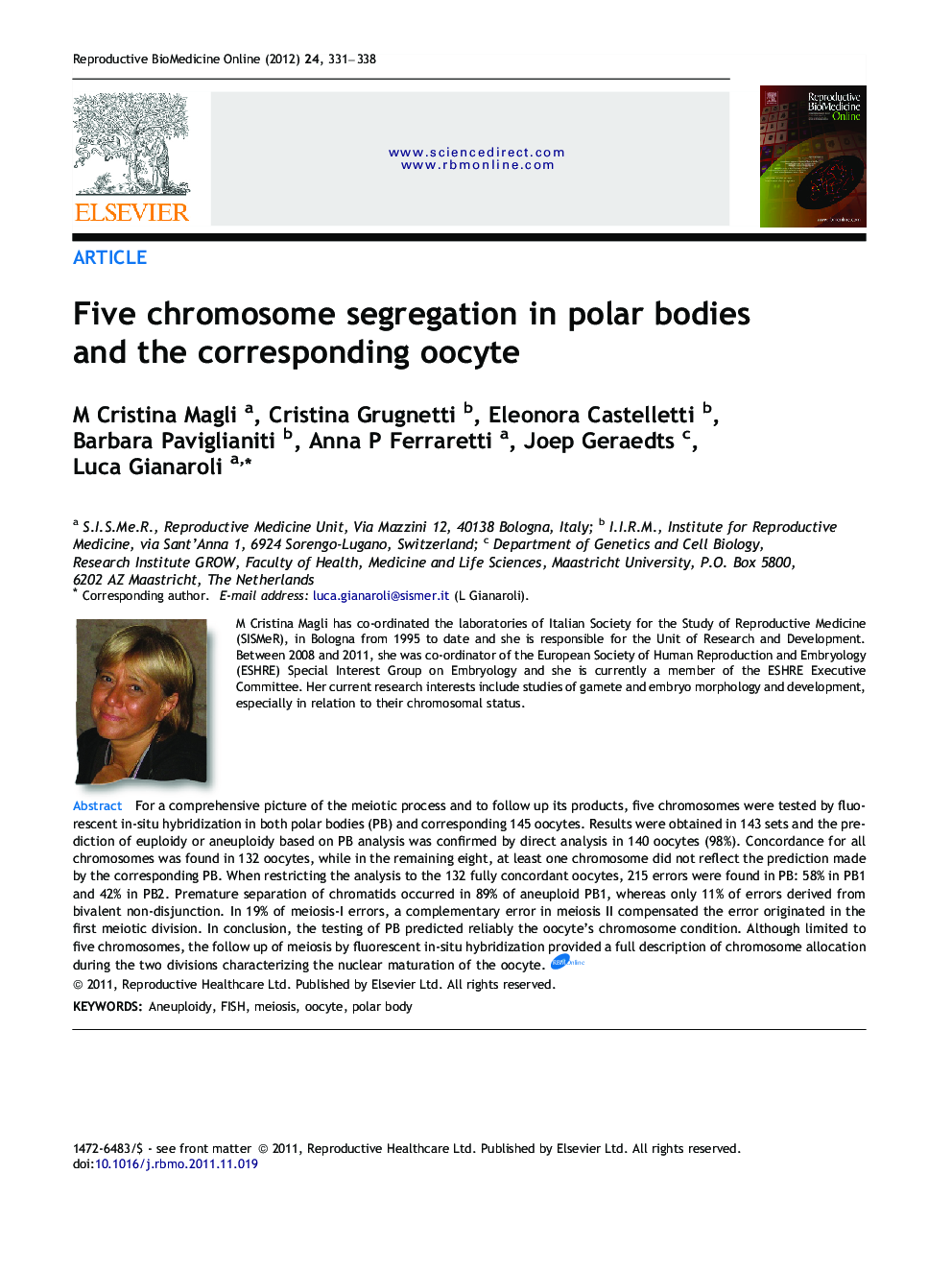| Article ID | Journal | Published Year | Pages | File Type |
|---|---|---|---|---|
| 3971054 | Reproductive BioMedicine Online | 2012 | 8 Pages |
For a comprehensive picture of the meiotic process and to follow up its products, five chromosomes were tested by fluorescent in-situ hybridization in both polar bodies (PB) and corresponding 145 oocytes. Results were obtained in 143 sets and the prediction of euploidy or aneuploidy based on PB analysis was confirmed by direct analysis in 140 oocytes (98%). Concordance for all chromosomes was found in 132 oocytes, while in the remaining eight, at least one chromosome did not reflect the prediction made by the corresponding PB. When restricting the analysis to the 132 fully concordant oocytes, 215 errors were found in PB: 58% in PB1 and 42% in PB2. Premature separation of chromatids occurred in 89% of aneuploid PB1, whereas only 11% of errors derived from bivalent non-disjunction. In 19% of meiosis-I errors, a complementary error in meiosis II compensated the error originated in the first meiotic division. In conclusion, the testing of PB predicted reliably the oocyte’s chromosome condition. Although limited to five chromosomes, the follow up of meiosis by fluorescent in-situ hybridization provided a full description of chromosome allocation during the two divisions characterizing the nuclear maturation of the oocyte.One essential requirement for normal embryo development is the presence of 23 pairs of chromosomes, a condition defined as euploidy. An incorrect number of chromosomes, or aneuploidy, is relatively frequent in human oocytes and is rarely compatible with implantation. The aim of this study was to verify the efficiency of polar body (PB) analysis in predicting the oocyte chromosomal status and to estimate meiotic errors for five chromosomes by fluorescent in-situ hybridization (FISH) in the complete set of female meiosis products, PB1, PB2 and oocyte. In all, 145 oocyte sets were analysed with results obtained in 143; the prediction of euploidy or aneuploidy made by PB testing was confirmed in 140 oocytes (98%). Concordance for all chromosomes was found in 132 oocytes; while in eight at least one chromosome did not reflect the prediction made by the corresponding PB. When restricting the analysis to the 132 fully concordant oocytes, 215 errors were found in the PB: 58% in PB1 and 42% in PB2. In 19% of meiosis-I errors, a complementary error in meiosis II compensated the error originated in the first meiotic division and, accordingly, the corresponding oocytes resulted to be normal for the chromosomes involved in the sequential errors. In conclusion, the testing of PB reliably predicted the oocyte chromosome condition. Although limited to five chromosomes, the follow up of meiosis by FISH provided a full description of chromosome allocation during the two divisions characterizing the nuclear maturation of the oocyte.
